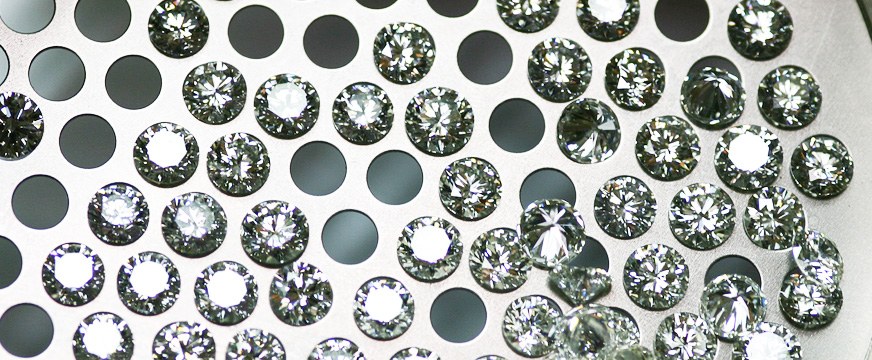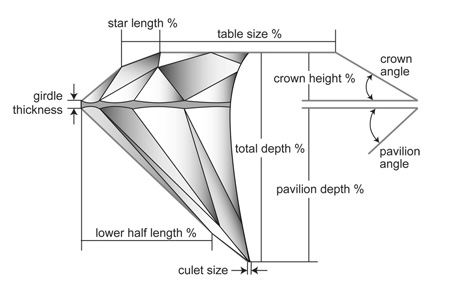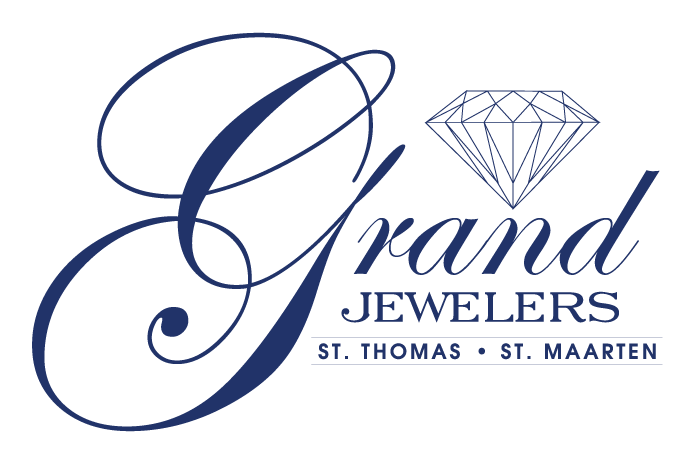
The Ingredients for Perfect Diamond Light Performance
Now you have your precious diamond. It is everything you dreamed it would be, and more. Its beauty and shine are outstanding, and the pride you wear it with equals its brilliance. But how do you properly care for it? How do you keep it clean? How should it be safely stored? At Grand Jewelers, we understand that an important part of owning a piece of beautiful diamond jewelry is the responsibility of caring for it. We hope to provide you with some helpful tips for protecting your precious stone.
The different areas of a diamond that are considered in proportion ideals are the table size, star length, girdle thickness, crown angle, crown height, pavilion angle, pavilion depth, lower girdle facet length, culet, and total depth. As seems obvious to anyone mathematically inclined, each of these details impacts all of the others, and the overall proportion of every area relates to each of the other areas. The amount of light that is reflected versus the light that is refracted makes all the difference in the light performance of the diamond. It is a very precise science.

The GIA and AGS have discovered that there is actually a range within which diamond proportions can fall that results in an ideal light presentation. The angles that make up the pavilion and the crown work together to optimize the light. While the pavilion needs to remain at a depth that is neither too deep nor too shallow, by adjusting the crown size, there is room for some compensation. Remember that any measurement adjustment within one part of a diamond impacts the remaining proportions.
Another important feature to consider is the correlated relationship between fire, the range of light color shown when light it dispersed, and brilliance, the white light that returns to the eyes of the onlooker. When you have more of one, you have less of the other, and the amount of either depends on the proportions and measurements of the diamond.
When understanding what makes the measurements and proportions of a diamond perfect, you must also understand what will negatively impact the light performance. If the cut is too shallow, a diamond will look washed out because too much of the light is being refracted out of the pavilion. If the cut is too deep, a diamond will appear too dark for the same reason. If the cut is cut off center, the diamond’s distribution of light will be lopsided, one side brilliant, and the other dark.
The precision behind the creation of diamonds is evident. An incredible amount of research and effort has gone into defining the perfect measurements and proportions of a diamond so that it produces the ideal light performance. The beauty of a diamond is unparalleled, and understanding the details that make it such can increase the experience of its beauty. At Grand Jewelers, we take pride in every diamond we sell. We hope that when each of our customers catches a glimpse of a diamond they own, the light performance results in amazement and awe.
Table Size
A diamond’s table size refers to the stone’s largest facet – most commonly the diamond’s top surface. Table percentages measure the ratio of the width of the diamond’s table in relation to the width of the entire stone. An ideal ratio contributes to a diamond’s fiery brilliance.
Pavilion Angle
A diamond’s “pavilion” refers to the cone-shaped bottom section of the diamond. The pavilion angle is a critical dimension when assessing the quality of a diamond, yet many GIA certificates neglect to include pavilion angle measurements. Most consumers must then rely on other measurements to make the right decision, but at Grand Jewelers, we can help to provide more concrete data to ensure an empowered selection.
Star Length
In diamond-talk, a stone’s “star length” is indicative of the crown’s star facets – kite-shaped facets that surround the crown, linking the table facet to the stone’s girdle.
Pavilion Depth
A diamond’s pavilion depth measures the distance from the girdle (the stone’s widest section) to the base of the pavilion (the stone’s flat top surface). A shallow pavilion depth will result in a “fish-eye” diamond shape, distorting light reflection and diminishing sparkle.
Gridle Thickness
A diamond’s “girdle” refers to the thin perimeter of the diamond. If you’re looking at a diamond from the side, you can identify the girdle as the widest part of the polished stone. Girdles typically make contact with the setting itself, and an ideally cut diamond takes into account a correctly proportional girdle thickness.
Lower Half Length
A diamond’s brilliance depends on the length of the lower girdle facets – triangular facets on the diamond’s girdle belt. The shorter the lower girdle facets, the wider the pavilion.
Crown Angle
The “crown angle” of a diamond refers to the portion of the diamond that exists between the girdle (the widest part of the stone) and the table (the stone’s flat top surface). In a well-proportioned diamond, a crown angle of between 33 and 35 degrees is ideal, depending on the particular cut.
Culet
A diamond’s “culet” refers to the base of the diamond, where the pavilion comes to a point or very small facet.
Crown Height
When we’re referring to a diamond’s “crown height,” we’re measuring the height of the diamond from girdle to table. Correctly proportioned crown heights can ensure a diamond’s ideal cut; typically, an ideal crown height constitutes between 14 and 16 percent of the stone’s total height.
Total Depth
A diamond’s “depth” refers to the distance from the table (the diamond’s flat top surface) to the base of the pavilion (the culet, or “point” of the diamond). A diamond’s total depth should be in proportion with the girdle, which varies depending on the particular cut.
